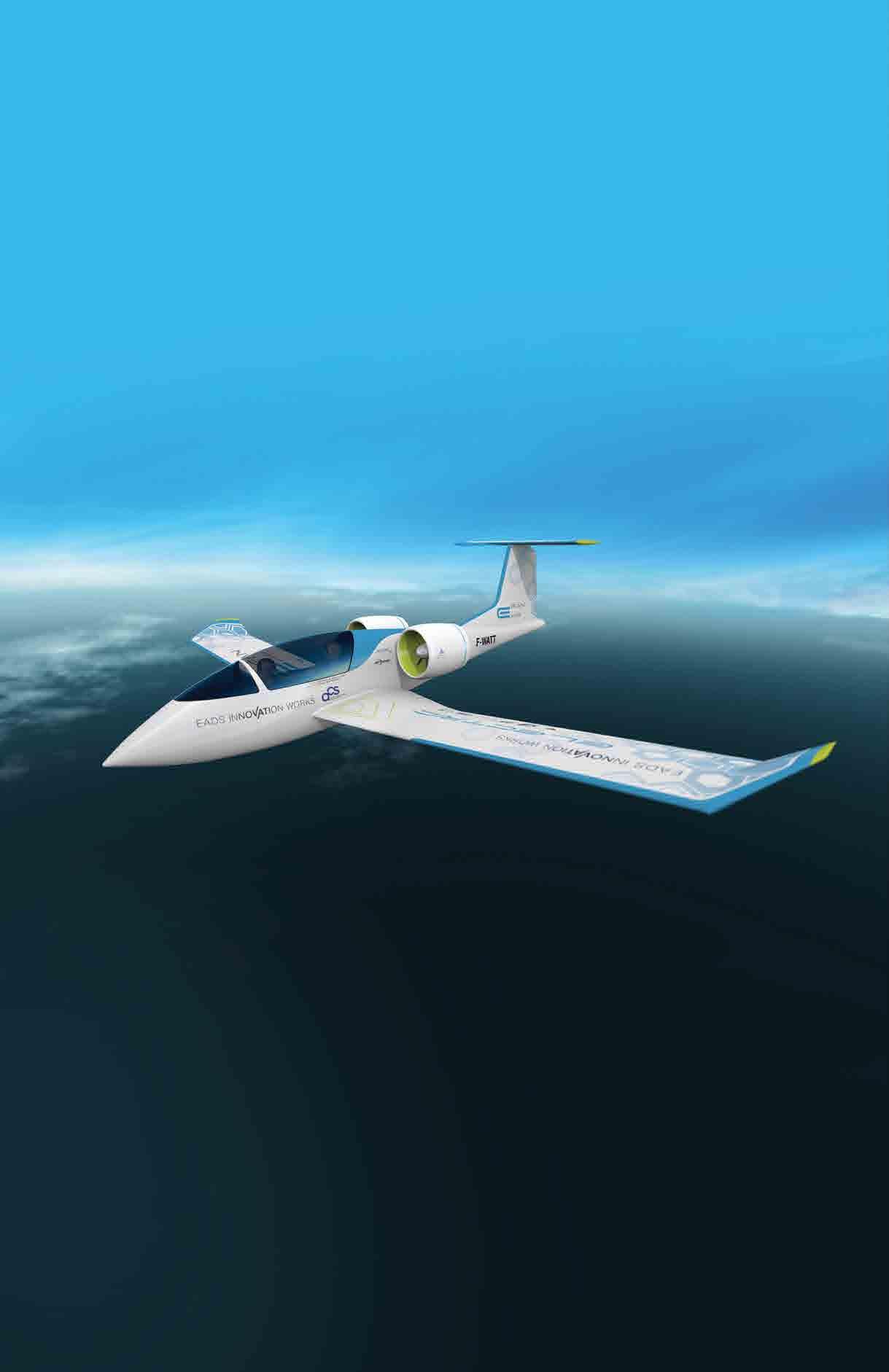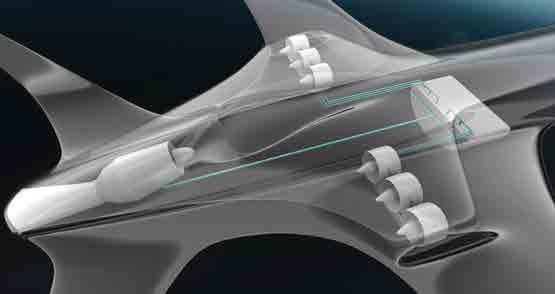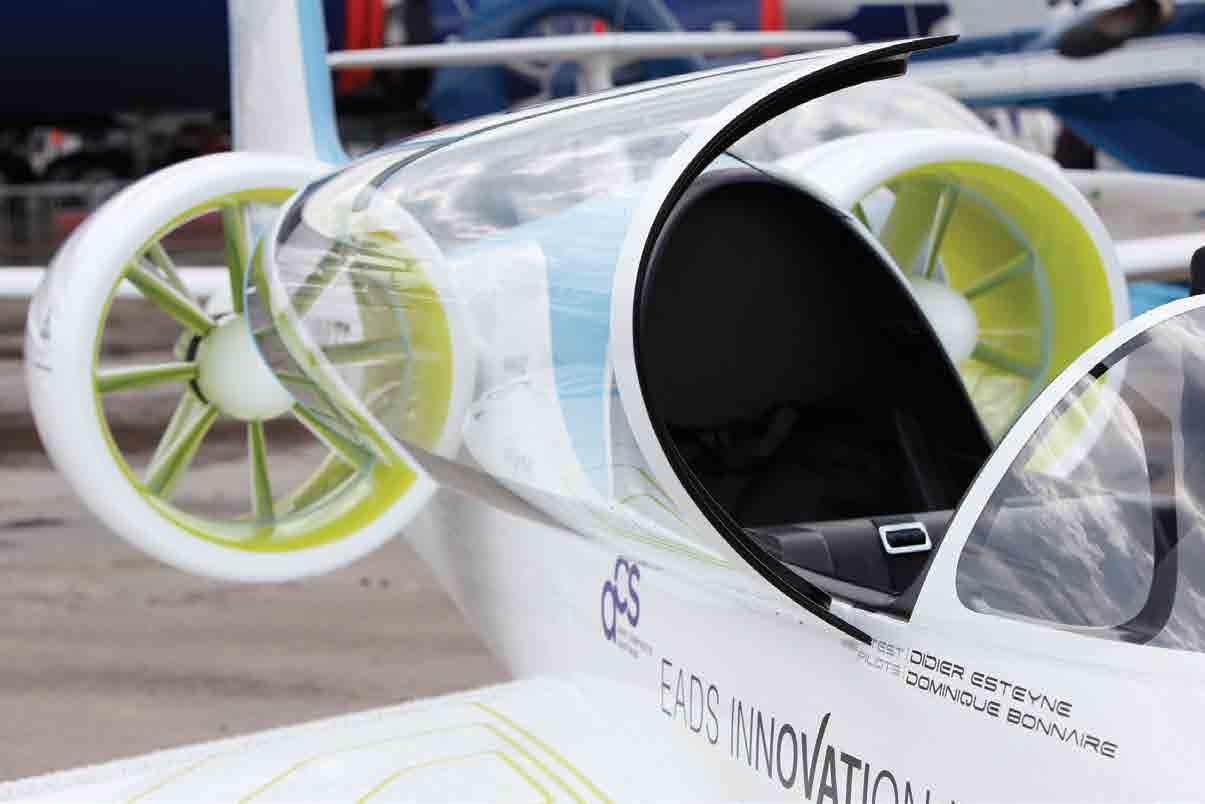
5 minute read
Working for greener skies
Will electric propulsion ever become a viable alternative for fossil fuel in the aviation industry? EADS is evaluating several different approaches.
AT this year’s Paris Air Show EADS demonstrated a number of initiatives in the field of electric and hybrid propulsion for aircraft.
The group has developed and built an electric general aviation training aircraft in cooperation with Aero Composites Saintonge (ACS), called E-Fan. It has also engineered, together with Diamond Aircraft and Siemens, an updated hybrid electric motor glider, the Diamond Aircraft DA36 E-Star 2. EADS has also cooperated with Rolls-Royce on a smarter future distributed propulsion system concept. These three projects are known as ‘E-aircraft’ projects.
The development of innovative propulsion system concepts for future air vehicle applications is part of EADS’ research to support the aviation industry’s environmental protection goals as spelled out in the ‘Flightpath 2050’ report by the European Commission. This roadmap sets the target of reducing aircraft CO2 emissions by 75 per cent, along with reductions of Nitrogen Oxides (NOx) by 90 per cent and noise levels by 65 per cent,compared to standards in the year 2000. EADS Innovation Works (IW), the corporate research and technology network of EADS, is developing and continuing to explore innovations in the field of environmentally friendly propulsion, in order to provide technology bricks for the operating divisions.
E-Fan: electric aircraft in progress
Two years after the first electric aerobatic plane and the smallest manned aircraft in the world with four electric engines, the all-electric Cri-Cri, the teams at EADS IW and Royan-based ACS (Charente Maritime, France) have gone a step further with E-Fan, a fully electric general aviation training aircraft.
“The introduction of the E-Fan electric aircraft represents another strategic step forward in EADS’ aviation research. We are committed to exploring leading-edge technologies that will yield future benefits for our civil and defence products,” said Jean Botti, chief technical officer (CTO), at EADS.
The two-seat E-Fan has undergone a very intensive development phase of only eight months. It features two electrical engines driving shrouded propellers. Total static engine thrust is about 1.5kN, with the energy being provided by two battery packs located in the wings. The length of the aircraft is 6.7 metres with a wingspan of 9.5 metres. It is the first electric aircraft featuring ducted fans to reduce noise and increase safety. Another innovation is the main landing gear. It allows electrical taxiing on the ground without the main engines and in addition provides acceleration during take-off up to a speed of 60km/h. To guarantee simple


handling of the electrically powered engines and systems, the E-Fan is equipped with an E-FADEC energy management system.
“We believe that the E-Fan demonstrator is an ideal platform that could be eventually matured, certified to and marketed as an aircraft for pilot training,” explained Botti.
EADS IW is developing the electrical and propulsion system together with partners like ACS, which is building the all-composite structure, the mechanical systems and conducted the aerodynamic studies. The French innovation institutes CRITT Matériaux PoitouCharentes (CRITT MPC) and ISAE-ENSMA, as well as the company C3 Technologies have been responsible for the construction and production of the wings. The engagement of these companies is also an investment in French infrastructure, jobs and know-how. Furthermore, electrical engineering experts from Astrium and Eurocopter helped out with their expertise in testing the battery packs while the livery was designed by Airbus. The E-Fan project is co-funded by the Direction Générale de l’Aviation Civile (DGAC, the French civil aviation authority), the European Regional Development Fund (FEDER), the French Government (Fonds FRED), the Région Aquitaine and the Département Charente-Maritime of France.
Hybrid propulsion systems
In addition to the development of the E-Fan, EADS is also working on hybrid propulsion systems. One of them is in the Diamond Aircraft DA36 E-Star 2 motor glider first introduced at the Paris Air Show 2011. The two-seater has been updated with a lighter and more compact electric motor from Siemens, resulting in an overall weight reduction of 100kg. Electricity is supplied by a small Wankel engine from Austro Engine with a generator that functions solely as a power source. EADS IW prepared the battery packs, which are installed in the wings.
“The serial electric propulsion allows us to design airplanes with totally different characteristics than today. Vertical take-off and high-speed cruise can be realised in a much more efficient way. The DA36 E-Star 2 was the next step to prove this technology and through its positive results to continue further developments,” Diamond Aircraft owner Christian Dries said at Le Bourget.
The research partnership between EADS, Siemens and Diamond Aircraft aims to ultimately introduce hybrid drive systems for both helicopters and large airplanes, while the airworthiness certification of full-electric and hybrid aircraft in the General Aviation category is to be achieved within the next three-to-five years.
Smart systems
Since 2012, EADS IW has also been working together with Rolls-Royce within the Distributed Electrical Aerospace Propulsion (DEAP) project, which is co-funded by the UK’s Technology Strategy Board. The project researches key innovative technologies that will improve fuel economy and reduce exhaust gas and noise emissions by having a distributed propulsion system architecture. In this architecture, six electrically powered fans are distributed in clusters of three along the wing span and housed with a common intake duct. An advanced gas power unit provides the electrical power for the fans and for the re-charging of the energy storage.
“The idea of distributed propulsion offers the possibility to better optimise individual components such as the gas power unit, which produces only electrical power, and the electrically driven fans, which produce thrust. This optimises the overall propulsion system integration,” explained Sébastien Remy, head of EADS Innovation Works.
“The knock-on effect we expect thanks to the improved integration of such a concept is to reduce the overall weight and the overall drag of the aircraft.”
“Electric aircraft are a key element in our research for the future of aviation,” EADS CEO Tom Enders said. “Only over the decades to come we will learn where the journey will take us, what shape and form electric propulsion will take. But we know we have no time to lose in terms of testing alternatives to fossil fuel. One thing is clear though: aviation will need to continue to fly with ever less fuel, less emissions and less noise. Working together on future propulsion systems is the best our industry can contribute to greener skies.” n











